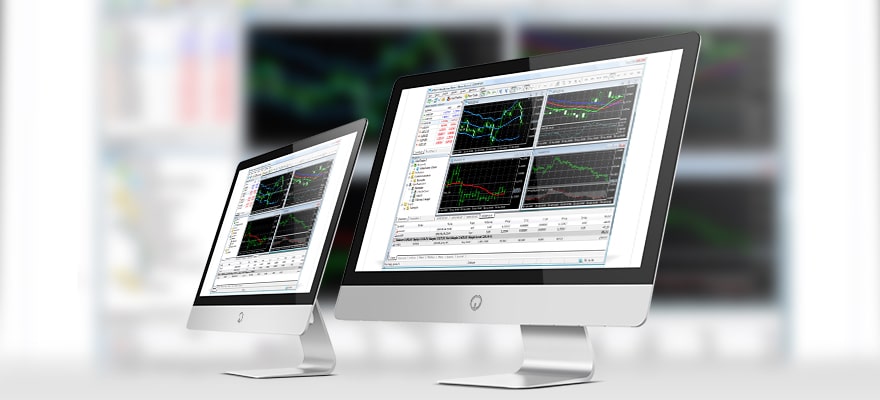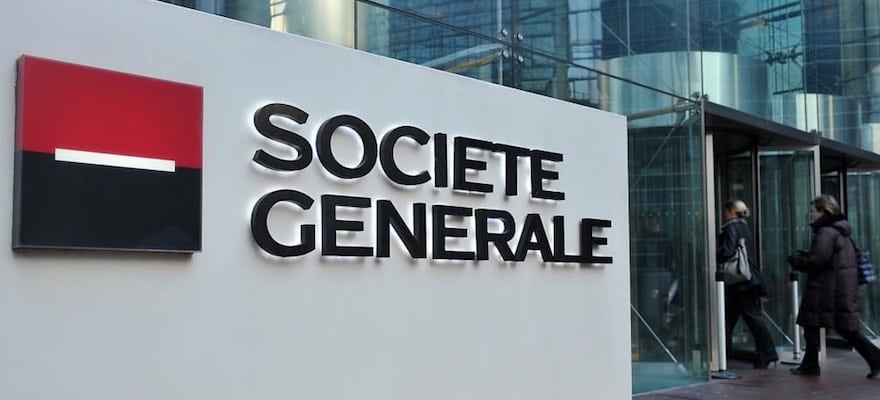Aqua Digital Rising, a new alternative asset investment platform that will allow people to invest in indices based on human beings has recently started its pre-funding round as it prepares for its launch in January 2021.
The investment platform could bring about big changes in the way people invest, allowing them to invest in human beings, thanks to a mathematical and analytic based live pricing engine.
In light of Aqua Digital Rising’s upcoming launch, Finance Magnates caught up with Yasin Sebastian Qureshi, the Founder and Head of Strategy at Aqua Digital Rising, to find out more about the project.
Can You Explain What Aqua Digital Rising Is All About?
We will be offering the first new alt-assets for many years. They will be traded as CFDs and put a value on the success of people from sports stars, to entrepreneurs and celebrities. For the first time in history, you will be able to invest in the person rather than the company or take a financial contract out on your favourite player rather than just placing a binary win or lose bet.
We think that Aqua indices are innovative and exciting new products. They can be traded using existing platforms including MT4 / MT5, which will be accessible, liquid and offer a new class of alt-assets.
How Did You Come up with the Idea for Aqua Digital Rising?
Aqua has come about because of the advances in AI and Machine Learning (ML) which has allowed the real-time interrogation of big data. We have all heard of companies like Cambridge Analytica and Clearview AI and know that many big banks are investing heavily in systems based on AI and ML.
At Aqua we have used the same technology, developed into our own proprietary systems, which allow us to analyse big data to create real-time tradable indices on people. But, instead of keeping the information behind closed doors, we are democratising it.
We are providing indices but believe there will be much wider use of the insights into individuals we cover. For example, nowadays, for a club manager, it is not just the performance of a player which defines success.
It is their positioning in social media, traditional media, politically and personally which makes them into superstars, or not. If they are liked by the fans, have positive followers and are praised in the media, they help build the club brand. Aqua Indices will give managers these insights.
What Has Gone into Creating Aqua Digital Rising?
Aqua is the result of two years of development work. Each index is created by a unique live pricing engine which accesses over 500 data points for each individual. The development and programming are at the backbone of Aqua, but we have also had to look carefully at the IP of individuals and how the interrogation of big data is handled.
We will provide recognised financial instruments which are completely separate from the people they track yet offer investors and traders the ability to buy, sell or hold a position in the contract, which tracks the individual.
There is no financial link to the underlying asset, the person, but the tradable product gives anyone investing the same options they would have if they were holding a CFD in gold.
Aqua has been formed by a group of sector specialists who have all been successful in the traditional banking and brokerage sectors. They know what traders want, how they diversify between products and can see the demand for CFDs outside of traditional financial assets from sports to celebrities.
Is There a Demand for the Type of Alternative Investment Aqua Digital Rising Offers?
We believe that the CFD market is calling out for innovation. When CFDs were launched, the ability to have contracts based on, but not holding the underlying asset, created an important new product for traders. However, development in the sector has been limited with a high level of trading linked to a couple of CFDs.
We see Aqua Indices as a way for brokers and traders to access a new set of alt-assets, which sit alongside and complement their existing trading choices.
How Do You Put a Value on Success?
Everything has a price, but it has only been with the development of big data and the advances in the interrogation of information that it has been possible to put a tradable value on people. The Aqua systems take hundreds of data points, 500+, and benchmarks these using peer group analysis to provide real-time pricing.
The reality is that in the modern world the value of a soccer star scoring a hat-trick in a must win match could be cancelled out by a comment he or she makes in the post-match interview. A tweet could raise a profile quicker than earning a penalty, or comments from a Chairman could end a transfer deal. The world is connected in a new and dynamic way and AI, ML, mathematics and algos are now the tools needed to analyse what is happening.
How Will Users Be Able to Invest in Products via Aqua?
Aqua Indices will be launched through Aqua’s own platform and will be available through a number of brokers. These discussions are ongoing, but we have already been surprised by the number of trading firms very interested in the products.
We do not expect Aqua Indices to challenge EURUSD CFDs in terms of volume. Although, it is very likely that a trader looking at taking a CFD in a single stock, for a company they do not really have any affinity for, may decide to takeout an equivalent Aqua CFD on President Trump, having followed his career day-by-day they may feel that now is the time to short him!
Aqua Recently Opened Funding Round, How Has This Been Going So Far, and What Is Your Goal?
The development of Aqua over the last two years has been funded by the founders. This first external funding round will allow the products to be launched in January and for the company to become fully operational. Aqua Rising will then be developed with an on-paper objective of going to an IPO, to give quick returns to investors, in 2022.
We officially launch Crowdfunding
Crowdfunding
Crowdfunding is defined as funding of a project via raising smaller denominations of money across a large body of number of people.New businesses that need access to more capital may also conduct crowdfunding. Generally, crowdfunding is performed through an online community, social media, or crowdfunding websites such as Kickstarter, GoFundMe, and RocketHub. Depending upon which jurisdiction an investor resides within will dictate the sort of restrictions that are applied to the crowdfunding pro
Crowdfunding is defined as funding of a project via raising smaller denominations of money across a large body of number of people.New businesses that need access to more capital may also conduct crowdfunding. Generally, crowdfunding is performed through an online community, social media, or crowdfunding websites such as Kickstarter, GoFundMe, and RocketHub. Depending upon which jurisdiction an investor resides within will dictate the sort of restrictions that are applied to the crowdfunding pro
Read this Term through the Eureeca platform on 28th September 2020 https://info.eureeca.com/aqua and the initial indications have been really positive. We know that although alt-assets have been around for a long time we need to be able to show how they fit into the modern trading agenda.
What Will the Money Raised during the Funding Round Be Put Towards?
We are launching new financial instruments and as with any other similar products they will be marketed, developed and the Liquidity
Liquidity
The term liquidity refers to the process, speed, and ease of which a given asset or security can be converted into cash. Notably, liquidity surmises a retention in market price, with the most liquid assets representing cash.The most liquid asset of all is cash itself.· In economics, liquidity is defined by how efficiently and quickly an asset can be converted into usable cash without materially affecting its market price. · Nothing is more liquid than cash, while other assets represent
The term liquidity refers to the process, speed, and ease of which a given asset or security can be converted into cash. Notably, liquidity surmises a retention in market price, with the most liquid assets representing cash.The most liquid asset of all is cash itself.· In economics, liquidity is defined by how efficiently and quickly an asset can be converted into usable cash without materially affecting its market price. · Nothing is more liquid than cash, while other assets represent
Read this Term to trade them will be managed. The initial funding will be used to achieve these three immediate requirements so that Aqua Indices become known and traded.
Moreover, the initial funding will be used to launch the Aqua platform which will give traders direct access to Aqua alt-assets.
Going Forward, What Is the Company Focusing on Right Now?
We are focused on getting the fundraising closed and for the launch of the first three products in January next year. These will be Soccer, Cricket and E-Sports which all have their own very enthusiastic and devoted audiences. We will continue to develop these products ahead of further indices being announced.
Long-Term, What Is Your Vision for Aqua?
Our vision is to establish alt-assets as a recognised and important trading option which will be used alongside other mainstream assets. We will look carefully at the funding options that will almost certainly involve taking Aqua Rising through an IPO, an area the team has a lot of experience in.
Our objective is to build a strong and sustainable business that in the medium to long term will provide trading indices but also be recognised for its democratisation of big data and the global insights it provides into people.
For future elections of Prime Ministers or Presidents, it is very likely that the pre-vote tracking will include the increase or decrease in the candidate’s value, as calculated by an Aqua pricing engine.
Aqua Digital Rising, a new alternative asset investment platform that will allow people to invest in indices based on human beings has recently started its pre-funding round as it prepares for its launch in January 2021.
The investment platform could bring about big changes in the way people invest, allowing them to invest in human beings, thanks to a mathematical and analytic based live pricing engine.
In light of Aqua Digital Rising’s upcoming launch, Finance Magnates caught up with Yasin Sebastian Qureshi, the Founder and Head of Strategy at Aqua Digital Rising, to find out more about the project.
Can You Explain What Aqua Digital Rising Is All About?
We will be offering the first new alt-assets for many years. They will be traded as CFDs and put a value on the success of people from sports stars, to entrepreneurs and celebrities. For the first time in history, you will be able to invest in the person rather than the company or take a financial contract out on your favourite player rather than just placing a binary win or lose bet.
We think that Aqua indices are innovative and exciting new products. They can be traded using existing platforms including MT4 / MT5, which will be accessible, liquid and offer a new class of alt-assets.
How Did You Come up with the Idea for Aqua Digital Rising?
Aqua has come about because of the advances in AI and Machine Learning (ML) which has allowed the real-time interrogation of big data. We have all heard of companies like Cambridge Analytica and Clearview AI and know that many big banks are investing heavily in systems based on AI and ML.
At Aqua we have used the same technology, developed into our own proprietary systems, which allow us to analyse big data to create real-time tradable indices on people. But, instead of keeping the information behind closed doors, we are democratising it.
We are providing indices but believe there will be much wider use of the insights into individuals we cover. For example, nowadays, for a club manager, it is not just the performance of a player which defines success.
It is their positioning in social media, traditional media, politically and personally which makes them into superstars, or not. If they are liked by the fans, have positive followers and are praised in the media, they help build the club brand. Aqua Indices will give managers these insights.
What Has Gone into Creating Aqua Digital Rising?
Aqua is the result of two years of development work. Each index is created by a unique live pricing engine which accesses over 500 data points for each individual. The development and programming are at the backbone of Aqua, but we have also had to look carefully at the IP of individuals and how the interrogation of big data is handled.
We will provide recognised financial instruments which are completely separate from the people they track yet offer investors and traders the ability to buy, sell or hold a position in the contract, which tracks the individual.
There is no financial link to the underlying asset, the person, but the tradable product gives anyone investing the same options they would have if they were holding a CFD in gold.
Aqua has been formed by a group of sector specialists who have all been successful in the traditional banking and brokerage sectors. They know what traders want, how they diversify between products and can see the demand for CFDs outside of traditional financial assets from sports to celebrities.
Is There a Demand for the Type of Alternative Investment Aqua Digital Rising Offers?
We believe that the CFD market is calling out for innovation. When CFDs were launched, the ability to have contracts based on, but not holding the underlying asset, created an important new product for traders. However, development in the sector has been limited with a high level of trading linked to a couple of CFDs.
We see Aqua Indices as a way for brokers and traders to access a new set of alt-assets, which sit alongside and complement their existing trading choices.
How Do You Put a Value on Success?
Everything has a price, but it has only been with the development of big data and the advances in the interrogation of information that it has been possible to put a tradable value on people. The Aqua systems take hundreds of data points, 500+, and benchmarks these using peer group analysis to provide real-time pricing.
The reality is that in the modern world the value of a soccer star scoring a hat-trick in a must win match could be cancelled out by a comment he or she makes in the post-match interview. A tweet could raise a profile quicker than earning a penalty, or comments from a Chairman could end a transfer deal. The world is connected in a new and dynamic way and AI, ML, mathematics and algos are now the tools needed to analyse what is happening.
How Will Users Be Able to Invest in Products via Aqua?
Aqua Indices will be launched through Aqua’s own platform and will be available through a number of brokers. These discussions are ongoing, but we have already been surprised by the number of trading firms very interested in the products.
We do not expect Aqua Indices to challenge EURUSD CFDs in terms of volume. Although, it is very likely that a trader looking at taking a CFD in a single stock, for a company they do not really have any affinity for, may decide to takeout an equivalent Aqua CFD on President Trump, having followed his career day-by-day they may feel that now is the time to short him!
Aqua Recently Opened Funding Round, How Has This Been Going So Far, and What Is Your Goal?
The development of Aqua over the last two years has been funded by the founders. This first external funding round will allow the products to be launched in January and for the company to become fully operational. Aqua Rising will then be developed with an on-paper objective of going to an IPO, to give quick returns to investors, in 2022.
We officially launch Crowdfunding
Crowdfunding
Crowdfunding is defined as funding of a project via raising smaller denominations of money across a large body of number of people.New businesses that need access to more capital may also conduct crowdfunding. Generally, crowdfunding is performed through an online community, social media, or crowdfunding websites such as Kickstarter, GoFundMe, and RocketHub. Depending upon which jurisdiction an investor resides within will dictate the sort of restrictions that are applied to the crowdfunding pro
Crowdfunding is defined as funding of a project via raising smaller denominations of money across a large body of number of people.New businesses that need access to more capital may also conduct crowdfunding. Generally, crowdfunding is performed through an online community, social media, or crowdfunding websites such as Kickstarter, GoFundMe, and RocketHub. Depending upon which jurisdiction an investor resides within will dictate the sort of restrictions that are applied to the crowdfunding pro
Read this Term through the Eureeca platform on 28th September 2020 https://info.eureeca.com/aqua and the initial indications have been really positive. We know that although alt-assets have been around for a long time we need to be able to show how they fit into the modern trading agenda.
What Will the Money Raised during the Funding Round Be Put Towards?
We are launching new financial instruments and as with any other similar products they will be marketed, developed and the Liquidity
Liquidity
The term liquidity refers to the process, speed, and ease of which a given asset or security can be converted into cash. Notably, liquidity surmises a retention in market price, with the most liquid assets representing cash.The most liquid asset of all is cash itself.· In economics, liquidity is defined by how efficiently and quickly an asset can be converted into usable cash without materially affecting its market price. · Nothing is more liquid than cash, while other assets represent
The term liquidity refers to the process, speed, and ease of which a given asset or security can be converted into cash. Notably, liquidity surmises a retention in market price, with the most liquid assets representing cash.The most liquid asset of all is cash itself.· In economics, liquidity is defined by how efficiently and quickly an asset can be converted into usable cash without materially affecting its market price. · Nothing is more liquid than cash, while other assets represent
Read this Term to trade them will be managed. The initial funding will be used to achieve these three immediate requirements so that Aqua Indices become known and traded.
Moreover, the initial funding will be used to launch the Aqua platform which will give traders direct access to Aqua alt-assets.
Going Forward, What Is the Company Focusing on Right Now?
We are focused on getting the fundraising closed and for the launch of the first three products in January next year. These will be Soccer, Cricket and E-Sports which all have their own very enthusiastic and devoted audiences. We will continue to develop these products ahead of further indices being announced.
Long-Term, What Is Your Vision for Aqua?
Our vision is to establish alt-assets as a recognised and important trading option which will be used alongside other mainstream assets. We will look carefully at the funding options that will almost certainly involve taking Aqua Rising through an IPO, an area the team has a lot of experience in.
Our objective is to build a strong and sustainable business that in the medium to long term will provide trading indices but also be recognised for its democratisation of big data and the global insights it provides into people.
For future elections of Prime Ministers or Presidents, it is very likely that the pre-vote tracking will include the increase or decrease in the candidate’s value, as calculated by an Aqua pricing engine.






















